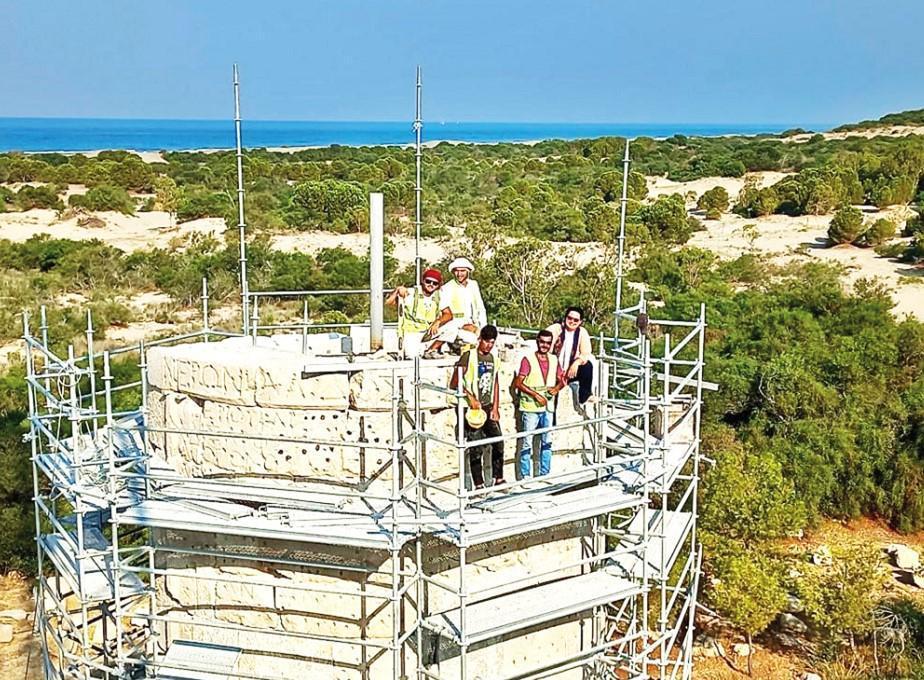
The monumental inscription, a part of the lighthouse in the ancient city of Patara in the southern province of Antalya’s Kaş district has taken its original place.
The construction of a 26.5-meter-high lighthouse, which was built by the Roman Emperor Nero and is reported to have been completely destroyed in a tsunami in 1481, continues in the ancient city of Patara, which dates back 6,000 years.
The X-rays of some 2,700 stones that have been unearthed during the excavations were taken to the stone hospital, and their original locations were determined one by one with artificial intelligence technologies. The reconstruction of the 2,000-year-old lighthouse, with probably 80 percent original stones, is considered a first in the world.
The lighthouse is among the artifacts unearthed so far in the excavations initiated by Professor Fahri Işık of Akdeniz University and his wife Havva İşkan Işık 33 years ago in the ancient city.
The head of the Patara excavations, Professor Havva İşkan Işık said that they have reached a height of 12 meters in the construction of the lighthouse.
The monumental inscription, one of the most important historical parts of the lighthouse, was completely replaced in its original place by the excavation team on Aug. 13, Işık announced.
Işık also translated the text on the monumental inscription as follows:
“Son of the divine Claudius, grandson of Tiberius Caesar Augustus and Germanicus Caesar, great-grandson of the divine Augustus; Nero Claudius Caesar, the owner of the tribunate for the 11th time, the Consul for the fourth time, the lord of the land and sea and the father of the country, had this lighthouse built for the safety of the sailors. Sextus Marcius Priscus, the Imperial Governor at the proprietorial level, led this construction.”
Providing information about the process of rebuilding the lighthouse, Işık said that three pulleys have been completed and a height of 12 meters has been completed on the lighthouse. Stating that two more pulleys will be completed, and a small arched superstructure will be built on top of it, Işık noted that nearly 2,700 original stones that have been unearthed during the excavations were used in the rebuilding of the lighthouse.
The lighthouse was discovered in 2000 by Fahri Işık, the head of the excavation at the time, and later unearthed by Havva İşkan Işık, who took over the excavation directorate.
The lighthouse, which is believed to have been completely destroyed in the earthquake and tsunami in 1481, is being built on a 6-meter podium by replacing the broken stones that cannot be used.